This post was co-written by Habanero alumni, Vonne Aguda.
Community Living BC believes in the power of connection and community. It shows up both in their work supporting adults with developmental disabilities and in the way they engage with one another. When they launched their GO Intranet, they knew employee recognition was important, but they didn’t realize the impact it would have.
“In a large organization, sometimes people get missed,” says David Pasko, a facilitator at CLBC. “[Recognition] is a nice way to acknowledge them. We all need to hear about the exceptional people who go beyond their call of duty.” CLBC’s GO Intranet features a recognition rollup embedded on their homepage that invites employees distributed across 37 regional offices to share praise and brighten their colleagues’ day.
An intranet can play a key role in fostering a healthy culture of recognition. Often this culture exists but needs to be made more visible and accessible to everyone in the organization. Features like the one used by CLBC make recognition easy for all employees to engage in and collaborate on.
As we continue to evolve GO Intranet for modern SharePoint, we wanted to look at recognition with fresh eyes. Our goal was to redesign recognition in GO to support meaningful employee experiences. In this post, we’ll take you through our process of discovery to show you how employee research helped inform the design of recognition in GO for modern SharePoint.
We’ll share:
- What we learned about employee recognition
- Tips on how you can make recognition more meaningful in your organization
- Intranet capabilities we designed to support and encourage meaningful recognition
Our research
To understand employees’ experiences with recognition more deeply, we conducted one-on-one workshops with a mix of fellow Habs and individuals employed in various industries throughout Canada. Interviewees represented different career stages and tenures: half had been employed at their company for less than five years while the rest had been with their company over five years.
We guided each participant through a prioritization activity where they ranked the reasons they want to give and receive recognition themselves or witness others’ recognition. Then, we asked each of them to share an experience of both giving and receiving recognition and we created a journey map to capture what they were doing, thinking and feeling before, during and after each experience.
Both activities helped us uncover and better understand people’s motivations, behaviours, thoughts and feelings around giving and receiving recognition. Here’s what we learned.
Public vs. private recognition
There are many ways to give recognition, and every person may have their own preferences. In general, recognition can be categorized as either public or private:
Public recognition is shared with the entire organization and can be viewed by anyone. Examples of public recognition include company-wide emails, meetings, or Slack or Microsoft Teams messages. Sharing kudos on company-wide channels can help foster an organizational culture of recognition but not everyone is comfortable with public praise. It could also create pressure to maintain high performance, particularly for those earlier in their career.
Private recognition is shared directly with the individual or team being recognized. This can be done through a private email, meeting or direct message.
An organization’s cultural readiness may also factor into employees’ comfort with or preferences for giving and receiving recognition, though it isn’t as influential as some people think. Organizations often underestimate the power and popularity of recognition in their digital workplace. We’ve seen even the most conservative organizational cultures readily adopt recognition when they have the right solution in place.
Why do people give recognition?
From our research, we found that people give recognition because they want to celebrate the positive impact that someone's work and attitude has had on others. It usually happens when someone notices a moment of growth or effort that goes above and beyond expectations.
One participant shared how she was inspired to recognize her colleague, who was known to be quite introverted, after he delivered a technically detailed presentation with confidence. It impressed her so much she immediately wanted to let him know how great of a job he did. “I was really proud of him and wanted to encourage him to keep putting himself out there,” she expressed. The delivery and timing of her recognition were deliberate. She recognized that this was a moment of growth for him but knew he might not have a sense of how well he’d done in the moment. Immediately recognizing him after his presentation helped to reassure and bolster his confidence in his own abilities.
The people power of recognition
Employee recognition creates some notable positive effects on the people in an organization. It's a clear way of communicating that someone’s work has created a notable benefit. In our research, we noted that the biggest motivator behind doing good work is to create a positive impact within the organization. Recognition is a great way to celebrate this positive impact and to encourage more of it to be done throughout the organization.
Recognition is also an effective way to let people know they're part of a supportive, appreciative network that values them. Research suggests that “[e]mployees who say they feel respected are more satisfied with their jobs and more grateful for—and loyal to—their companies. They are more resilient, cooperate more with others, perform better and more creatively, and are more likely to take direction from their leaders.” We found that employees who felt valued in their organizations were inspired to do better work and felt more connected to their peers.
Recognition in GO Intranet gives employees the ability to comment on public recognition, which encourages others to “pile on” their praise.
The organizational power of recognition
Recognition positively affects the organization itself by encouraging an organizational environment of gratitude. It encourages celebrating shared wins, acknowledging project achievements, and sharing good work being done throughout the organization. These three factors not only deepen the relationships between peers, but also help people feel closer to an organization’s purpose and values.
We wanted to reinforce this culture of gratitude in GO by “recognizing the recognizers.” Each time employees offer recognition, they receive a confirmation along with a summary panel that acknowledges their contribution. It’s a seemingly small part of the experience that can have big impact by connecting employees’ individual actions directly to their workplace’s culture.
How do we make recognition more meaningful?
Recognition is most meaningful when it feels genuine and authentic. From our research, the main factor behind genuine recognition is being specific. “I would want to feel that it’s genuine and thoughtful,” noted one of our participants. “I would hate to receive something where it feels like they just kind of got a prompt… and there's a canned statement and my name. It has to feel real and meaningful.”
We designed the experience in GO Intranet to prompt employees to select up to three reasons they want to recognize their colleague. Organizations can configure these categories to align with their values or to support a culture change project. They then have an opportunity to further describe the positive impact the employee has had in their own words.
How to harness the power of recognition
Based on our research, we put together these recognition recommendations:
1. Encourage recognition among teams.
If your organization is struggling with maintaining recognition, try encouraging it amongst teams. We found that recognition given by peers and teammates is more meaningful than receiving it from managers or leadership. Many also noted in our research that peer-to-peer recognition is often given in the moment verbally while working together or shared casually through a personal message.
2. Use different channels.
People have different preferences when receiving and giving recognition. Not everyone is comfortable with public recognition, so consider having different channels and methods for sharing recognition. By accommodating these preferences, more people may be inclined to participate in giving recognition.
Not all organizations need a dedicated recognition module on their intranet. If employees are already actively using other channels like Yammer or Microsoft Teams for recognition, the job is to aggregate recognition and make it more visible across the organization. In GO, our “what’s happening” rollup on the homepage surfaces recognition from these Microsoft 365 channels so everyone can see them.
3. Be aware of biases.
Lastly, we recommend being aware of biases when it comes to giving recognition. When people do work outside of their usual role, try something new, or when the job is less visible, they tend to be less recognized. By being mindful of these biases, you can make sure people are recognized more equally.
Designing for meaningful recognition
Whether it’s a company-wide kudos or a direct message, organizational recognition helps build a better workplace for everyone involved. From our research, we gained a deeper understanding of employees’ experiences with recognition and how to make recognition more meaningful. We used these valuable insights to redesign recognition in GO Intranet for modern SharePoint, so it’s easier and more rewarding for employees to give and receive recognition.
It's just one way organizations can make recognition more accessible. Designing experiences that support and encourage meaningful recognition requires a thoughtful approach that meets the unique needs of your organization’s culture.


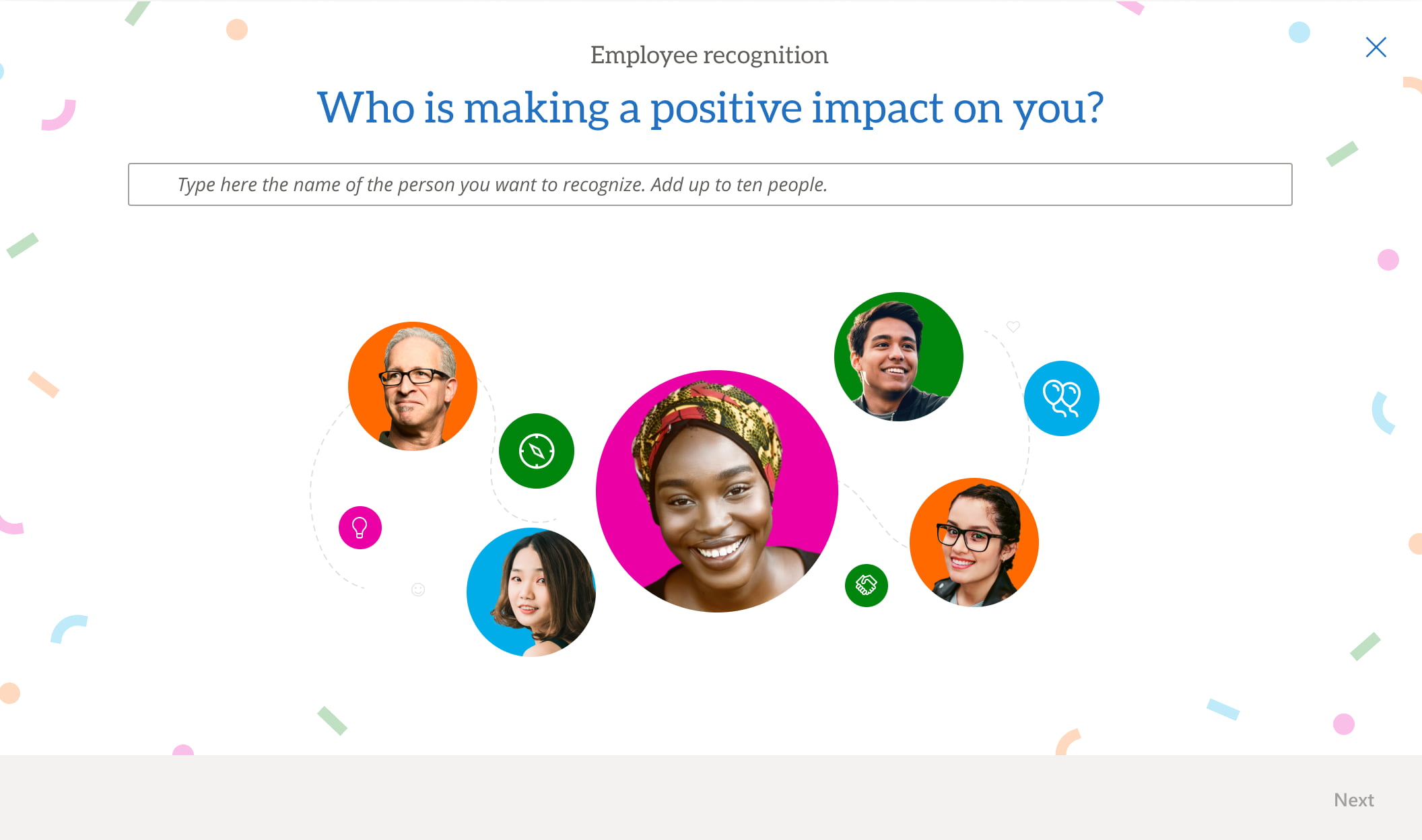
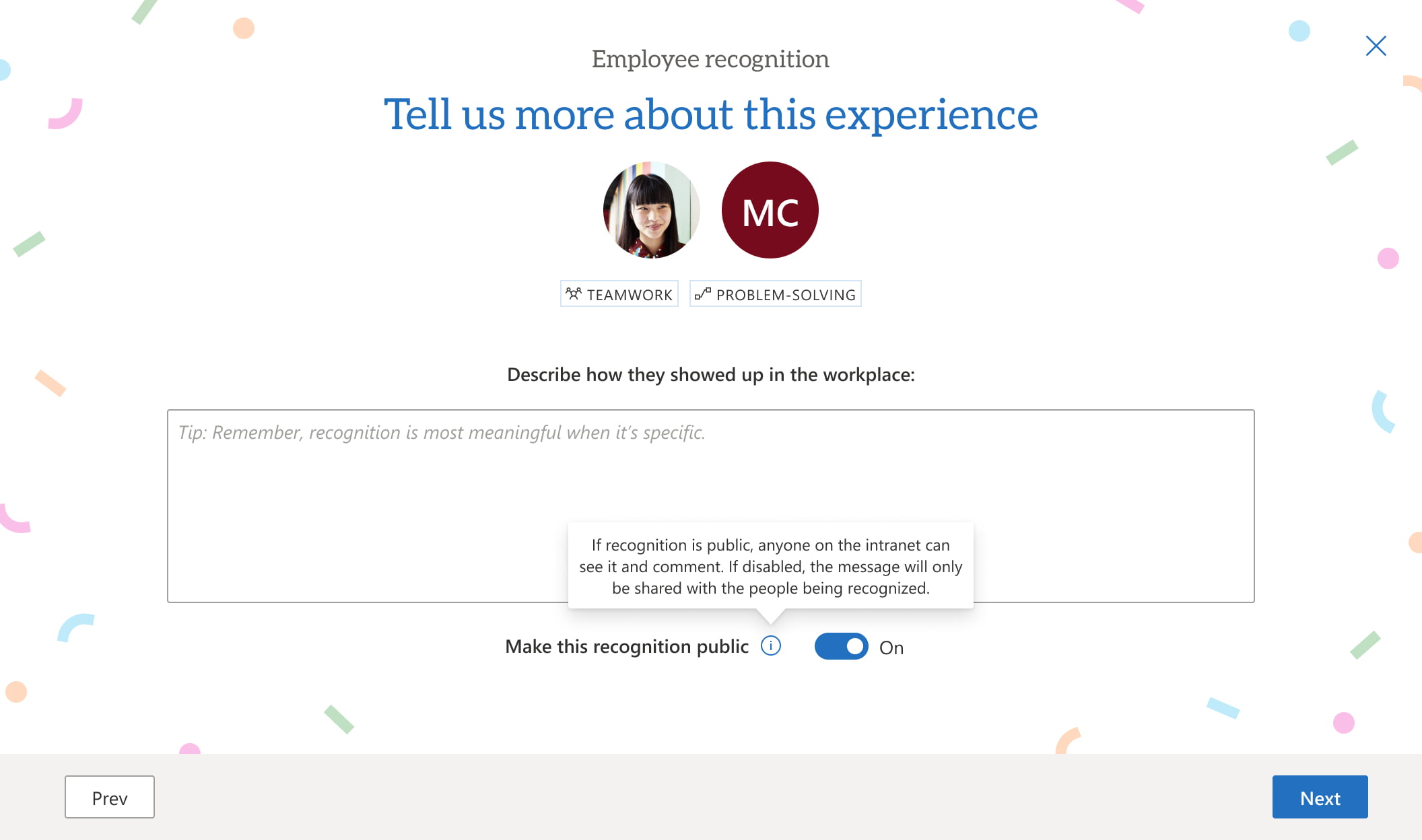
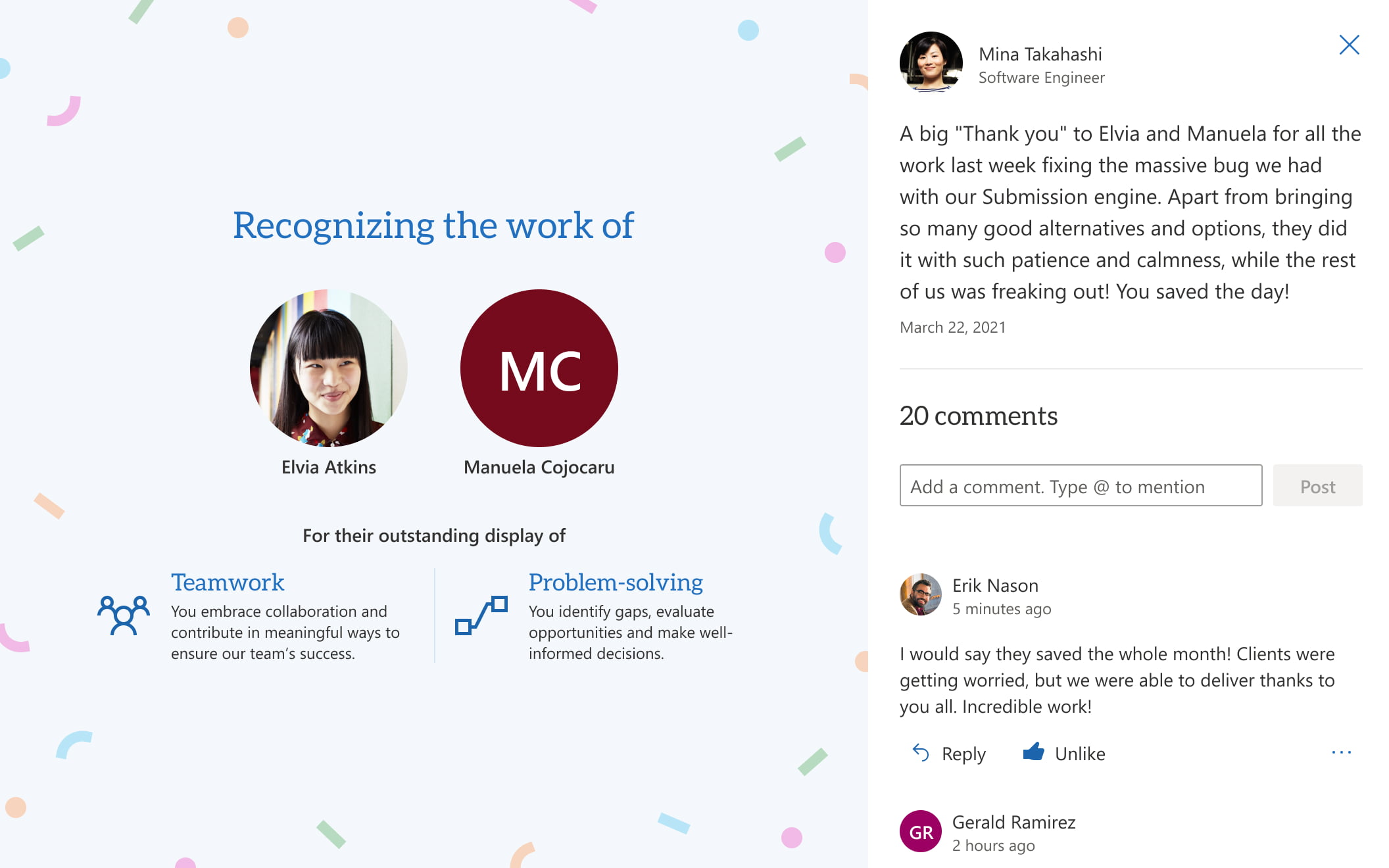
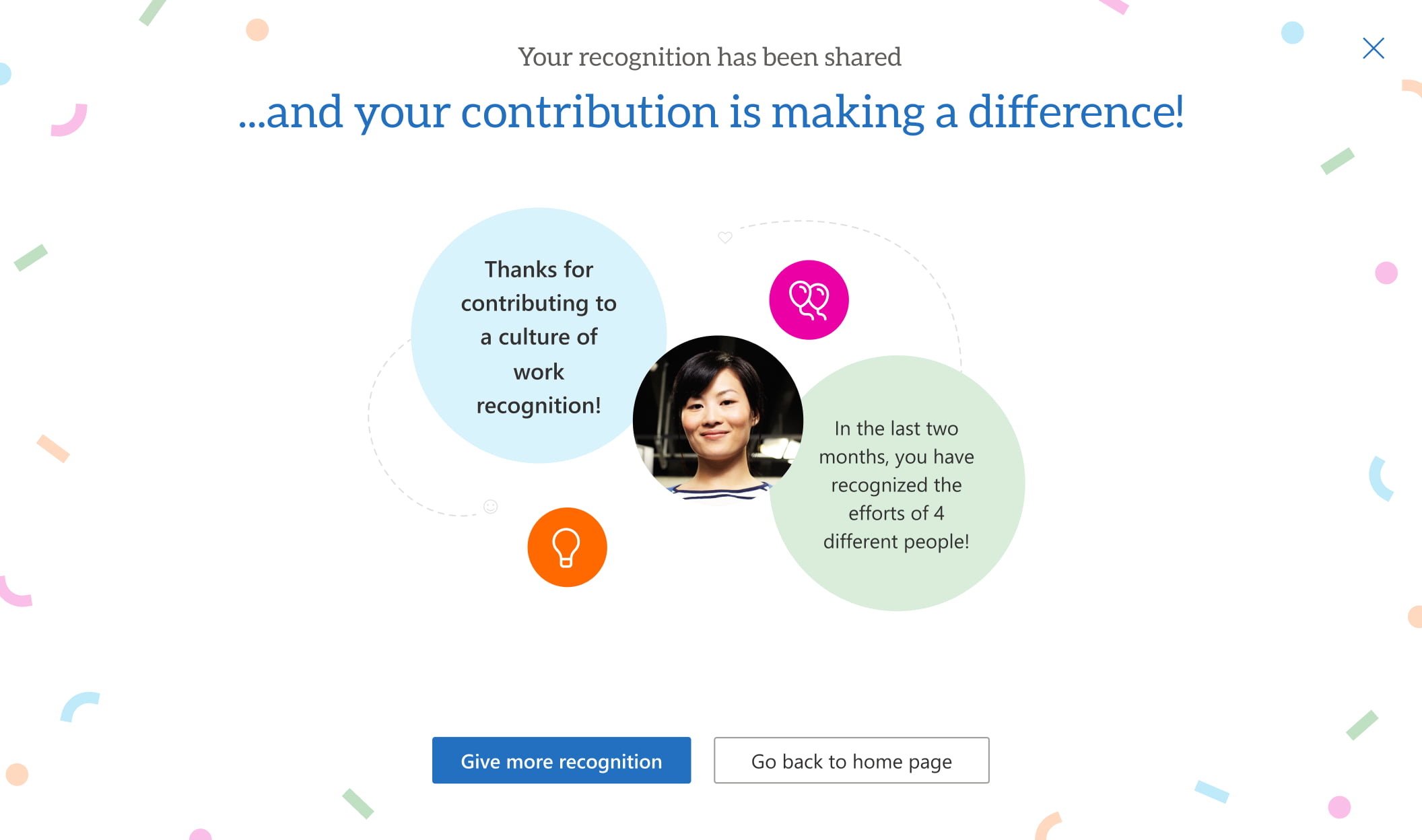
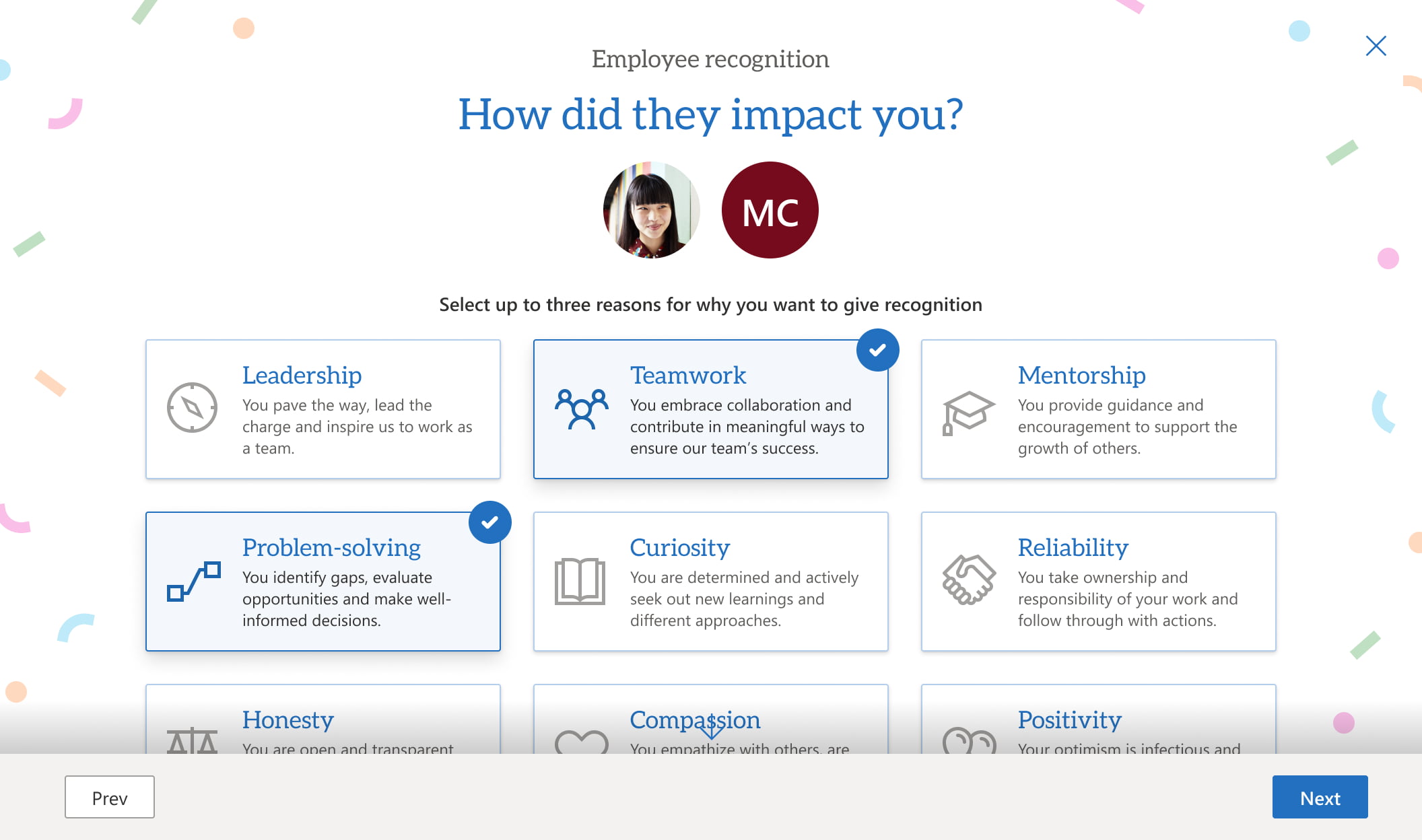
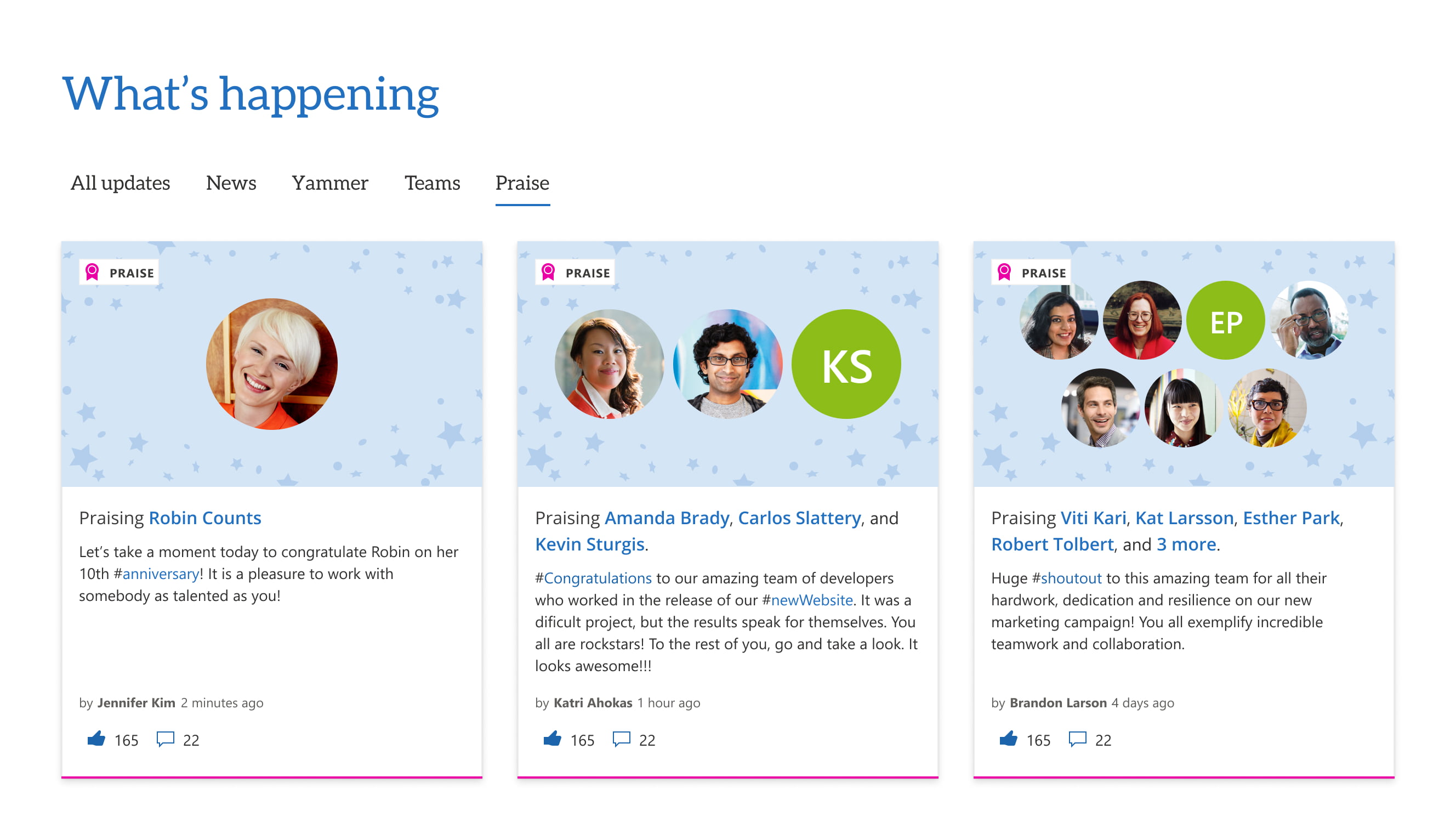


.jpeg?bc=white&la=en&mw=416&modified=20251202191043&hash=E64AA9DFFAE8D1AC27890831F714D5B0FA2FEBB2)

